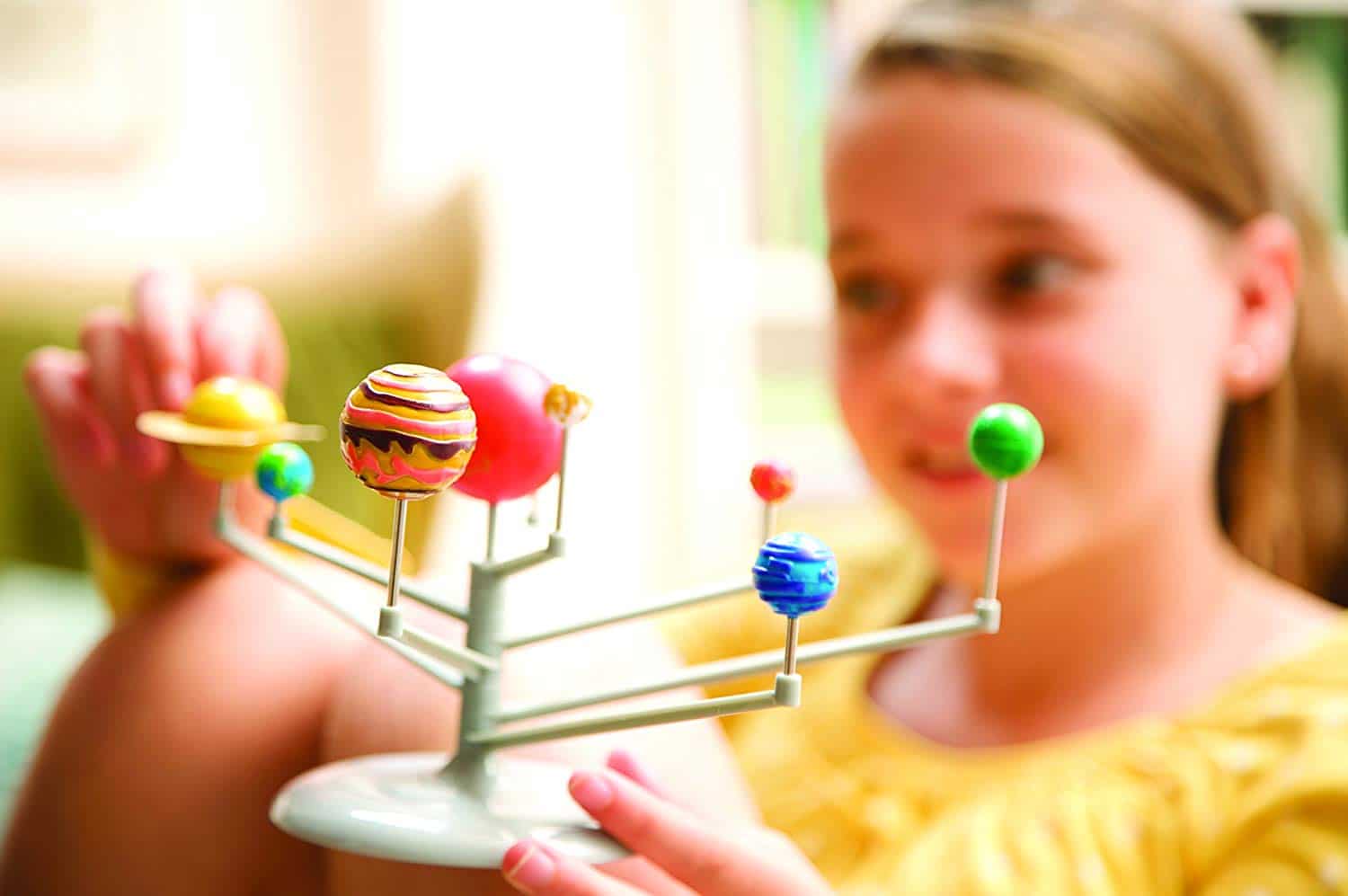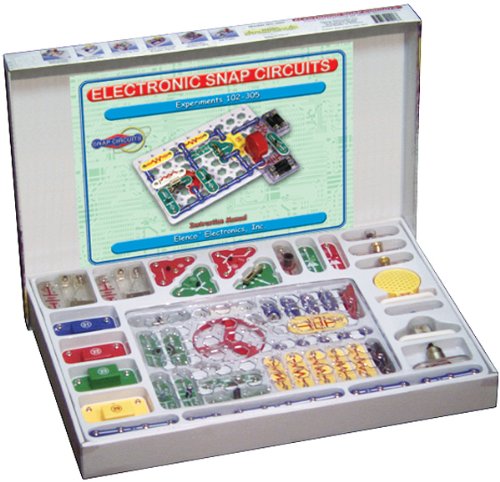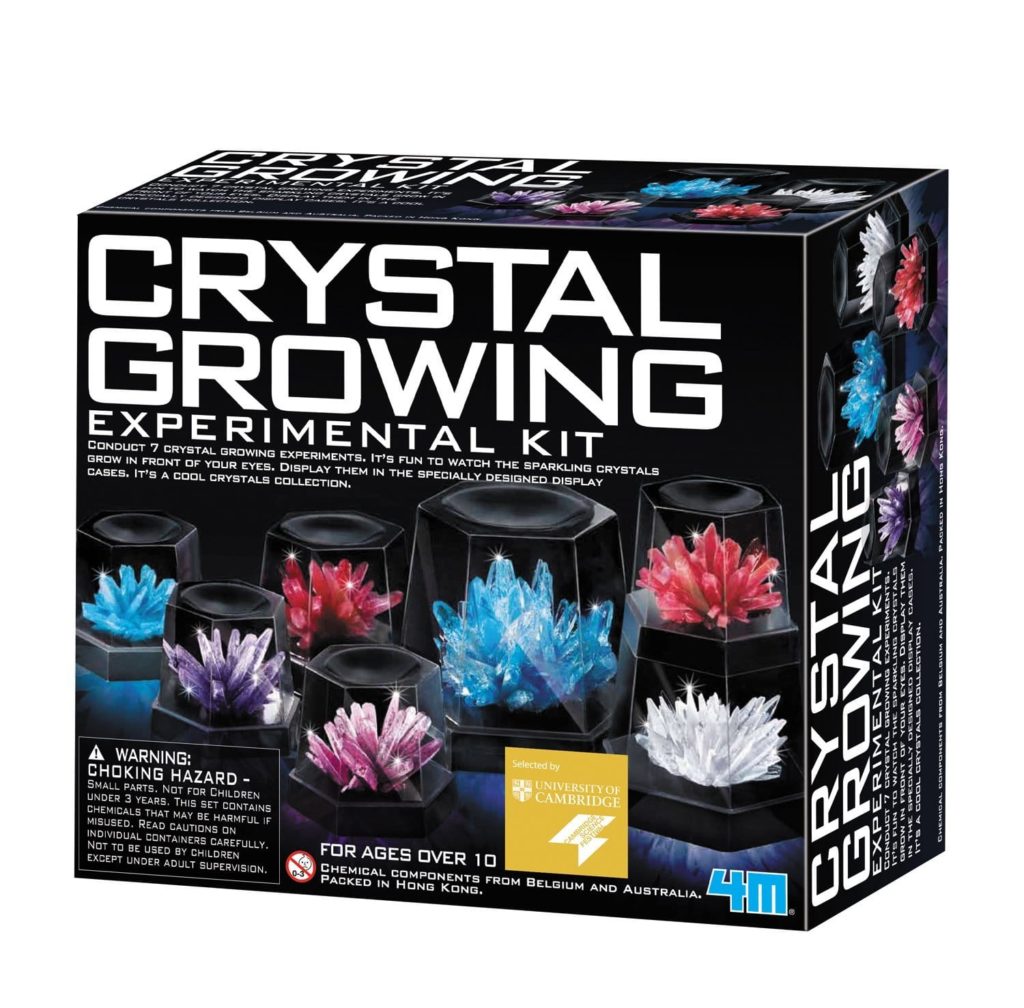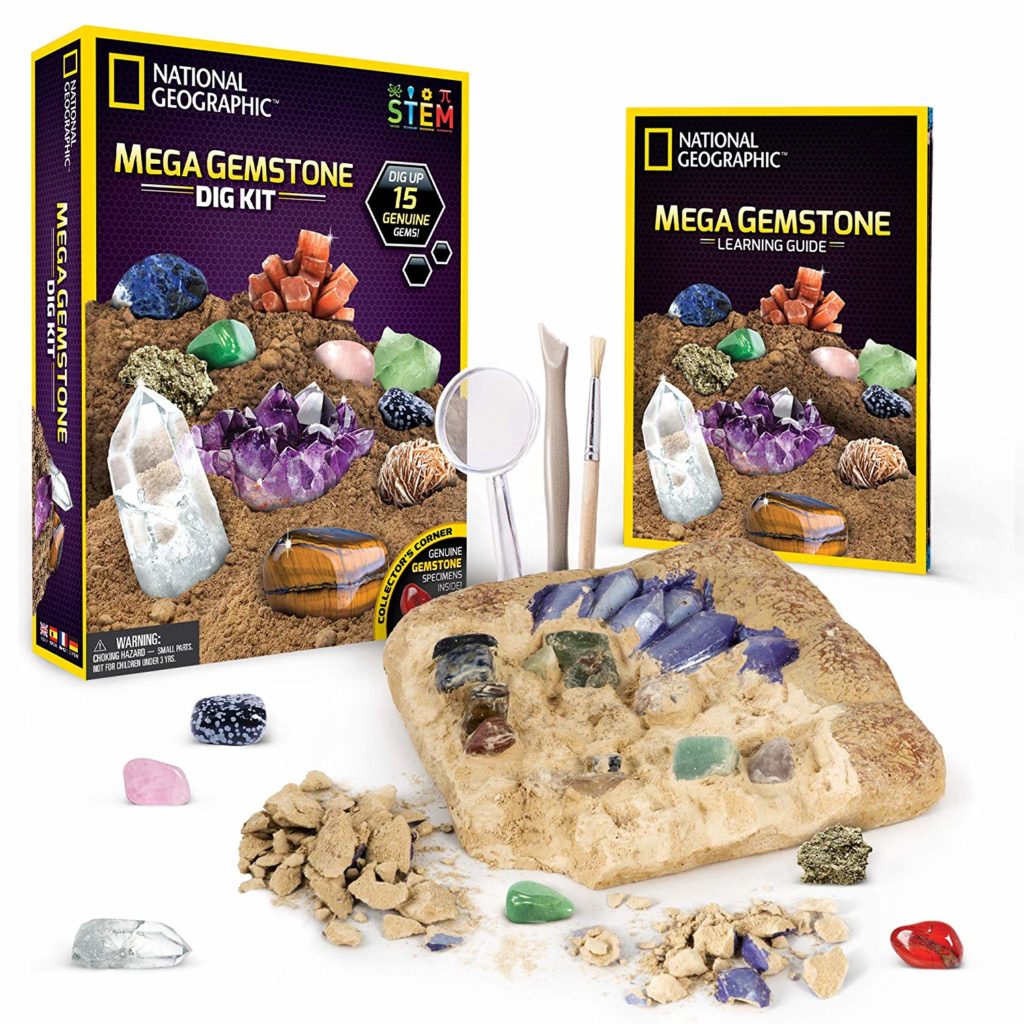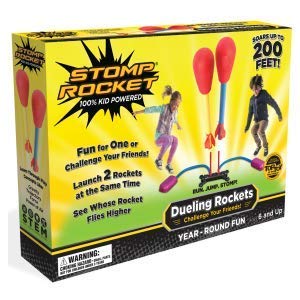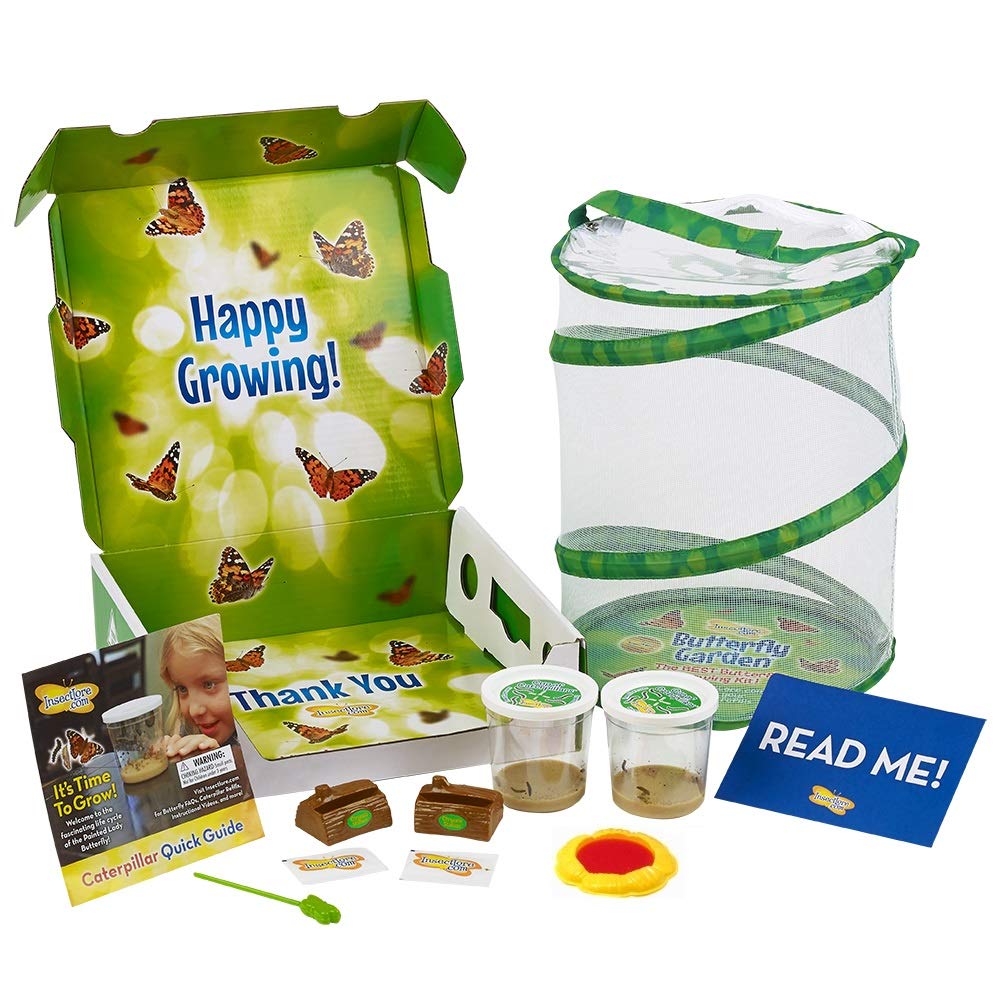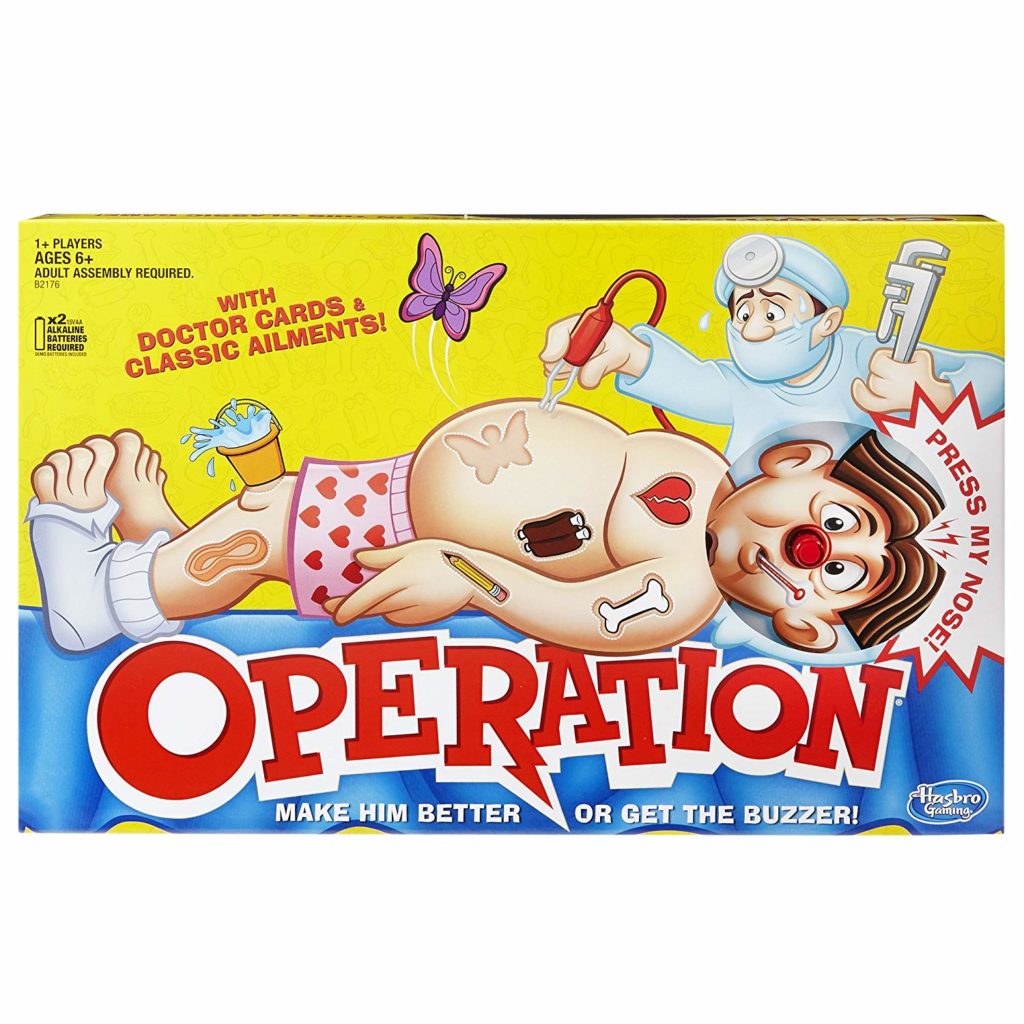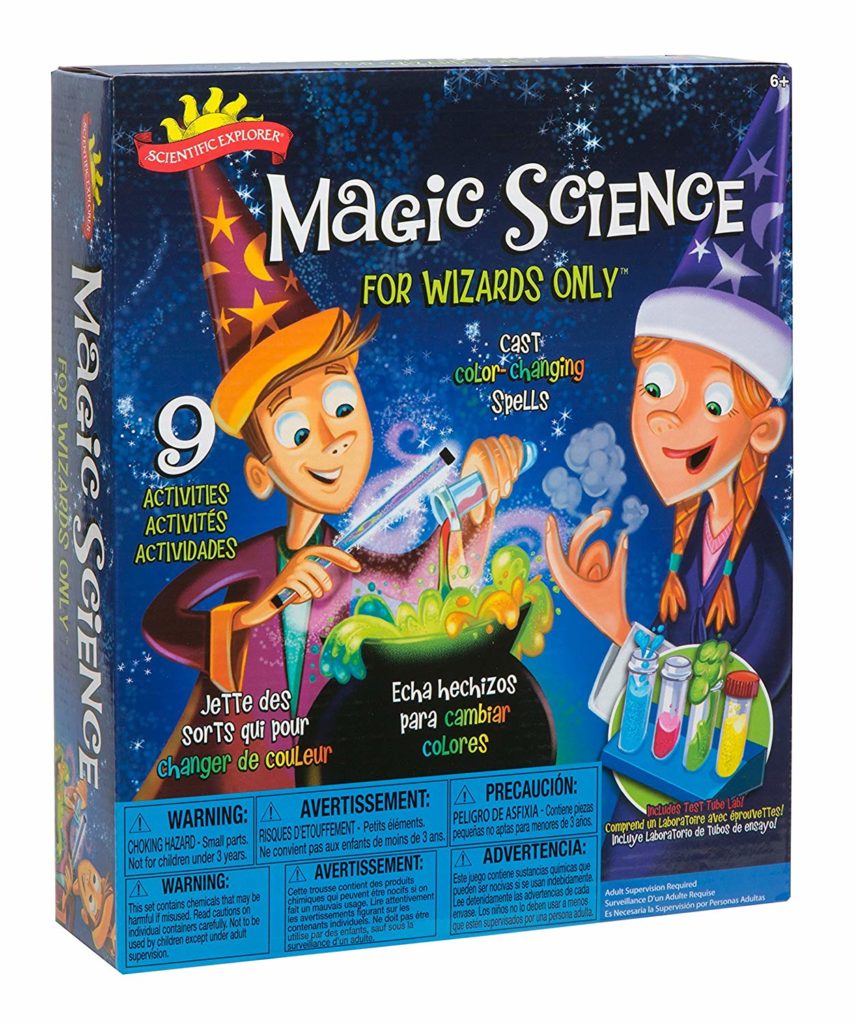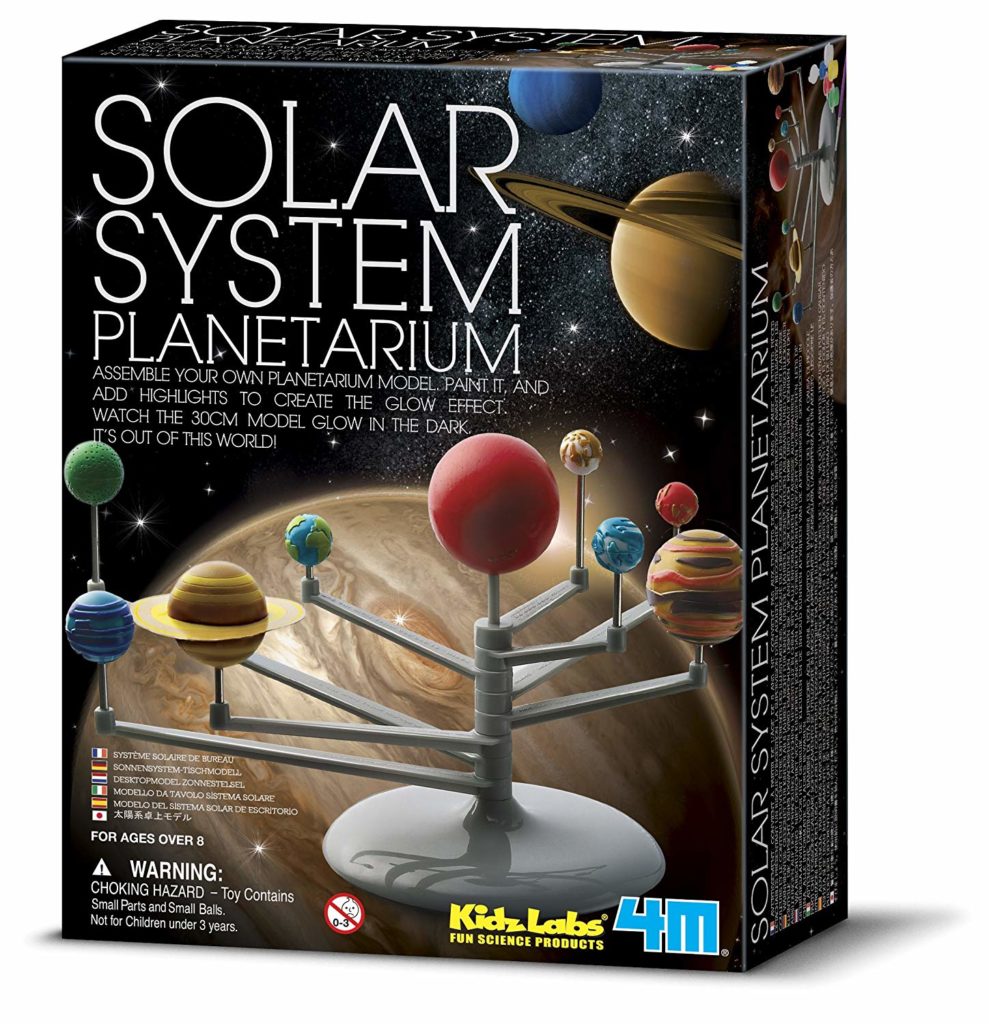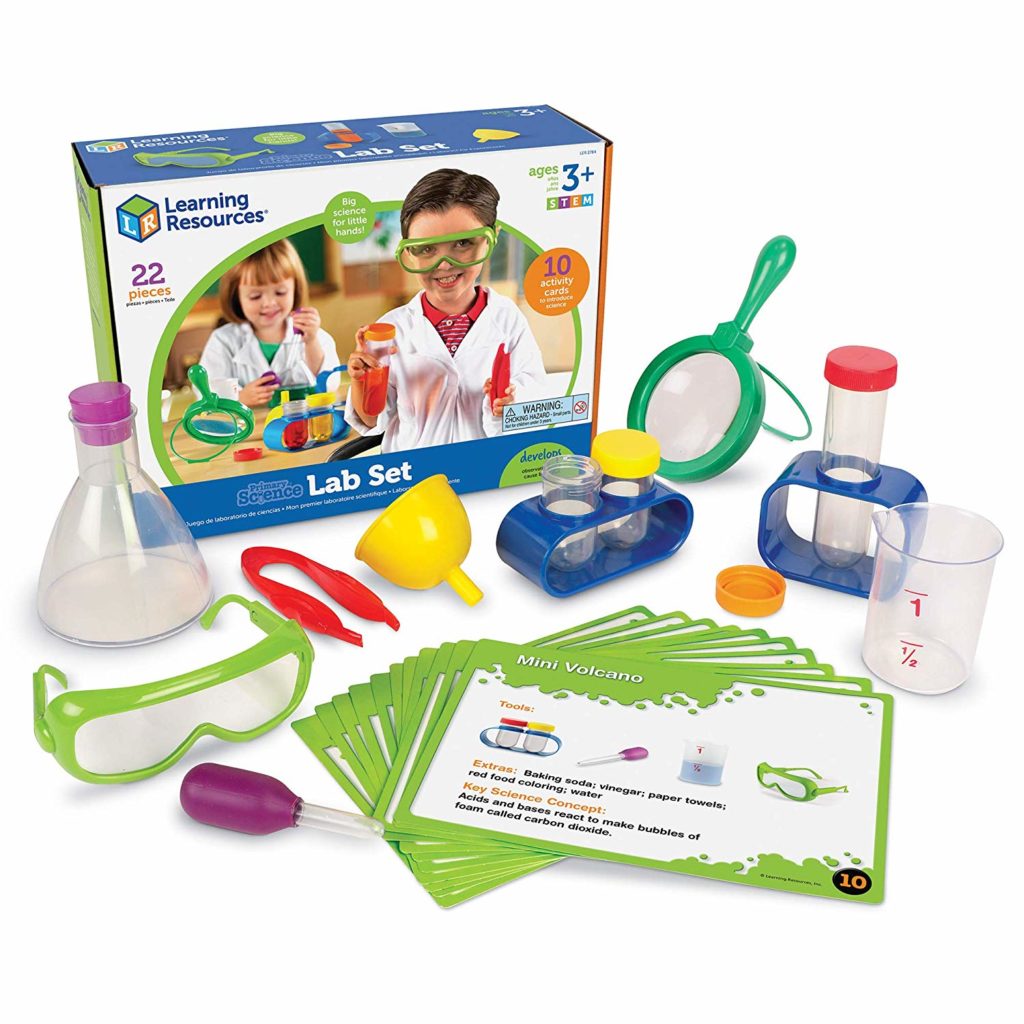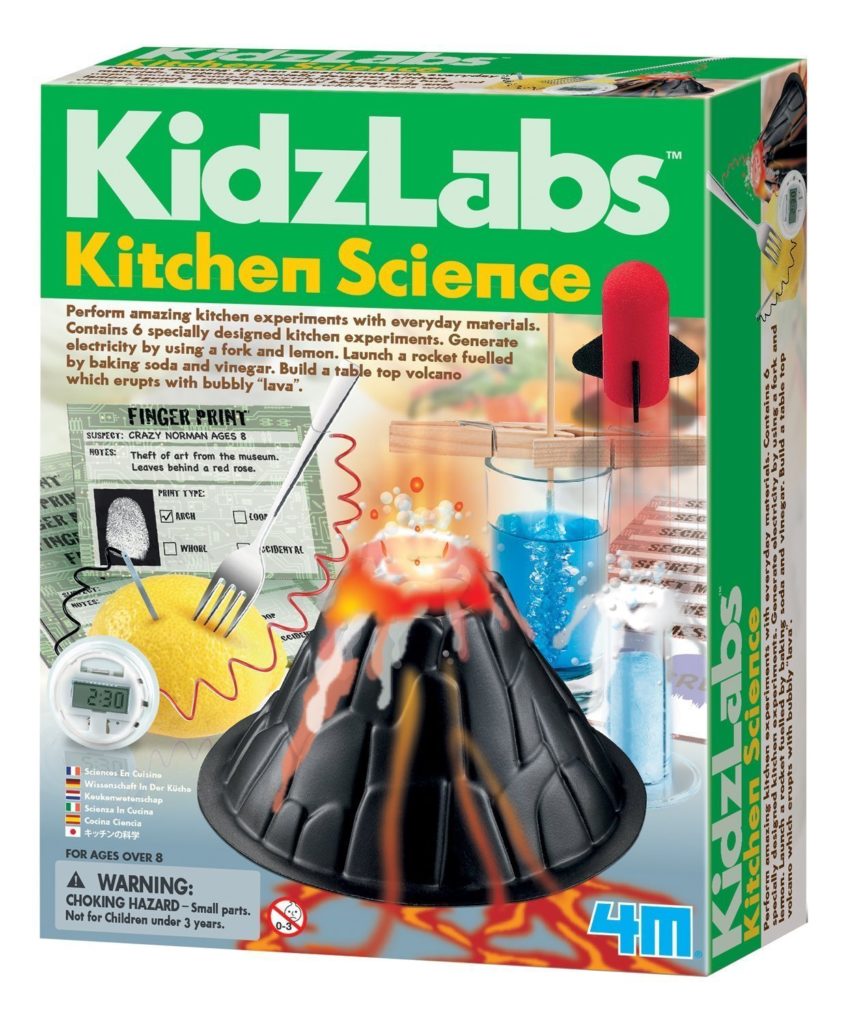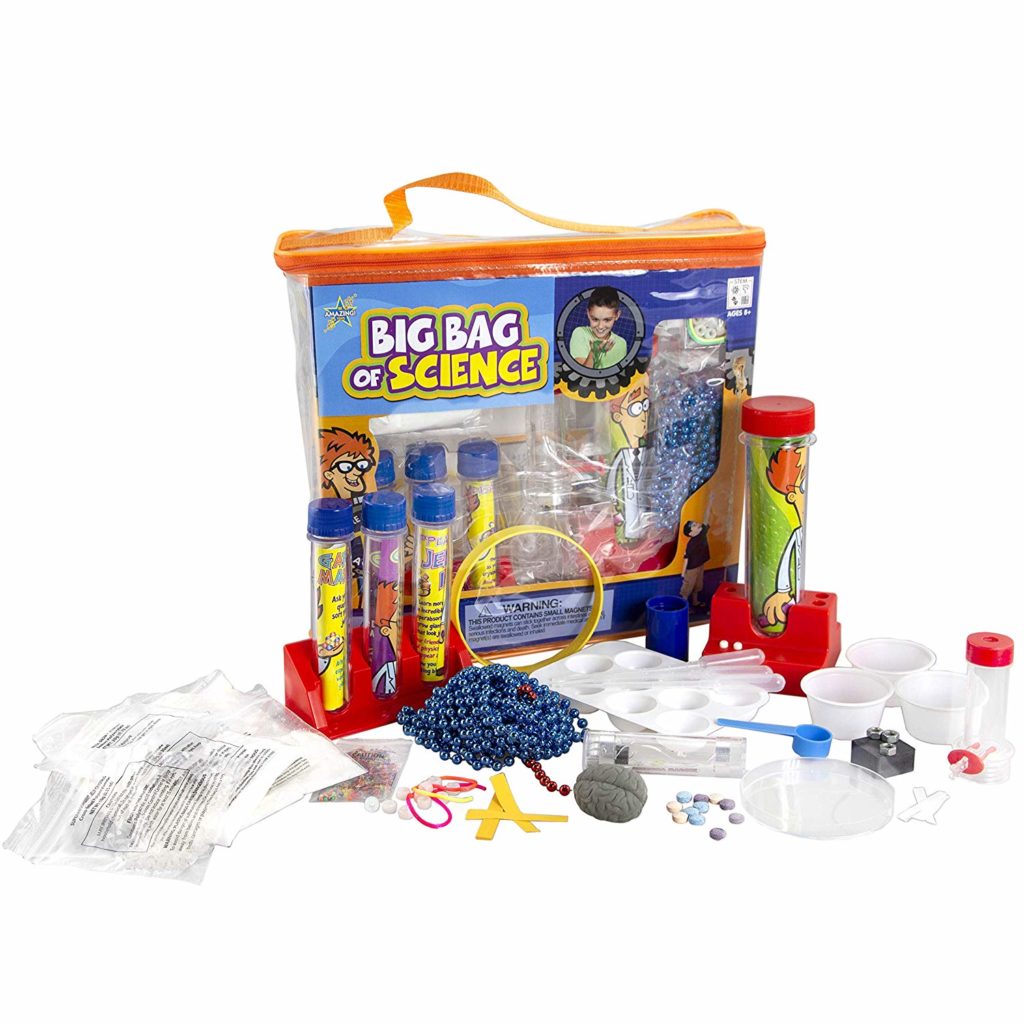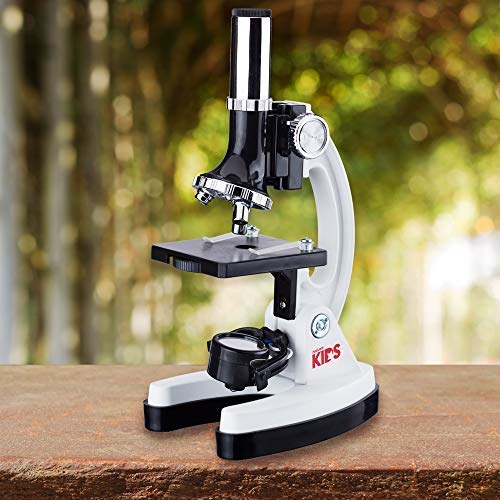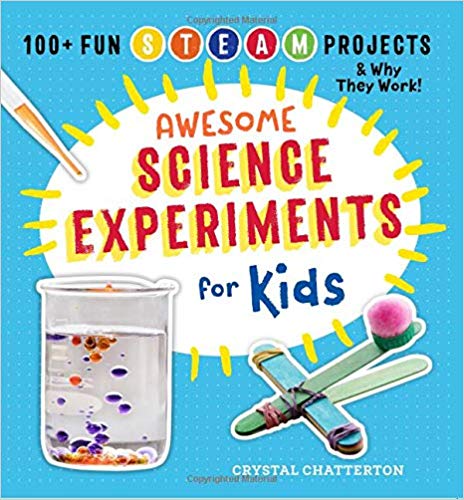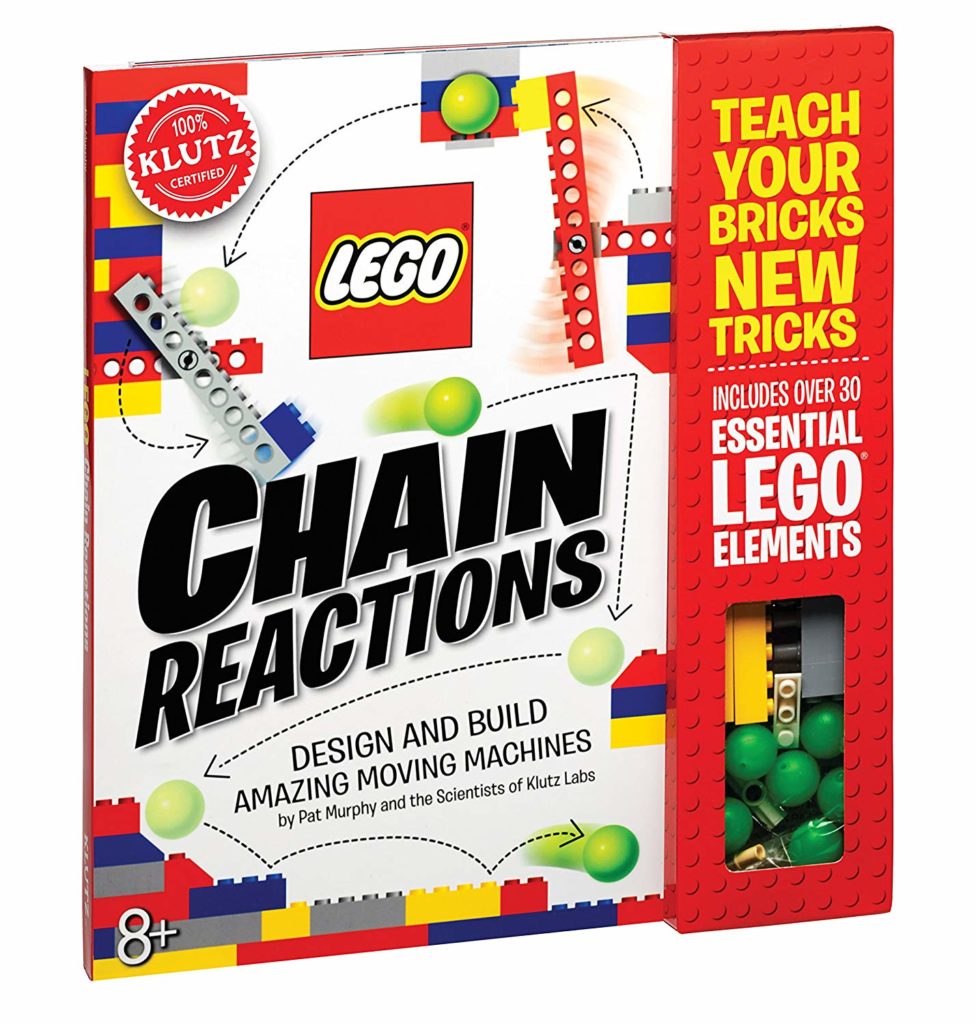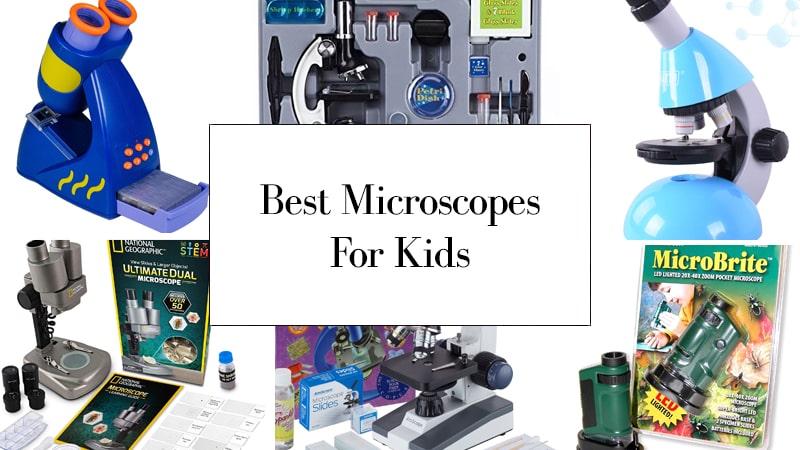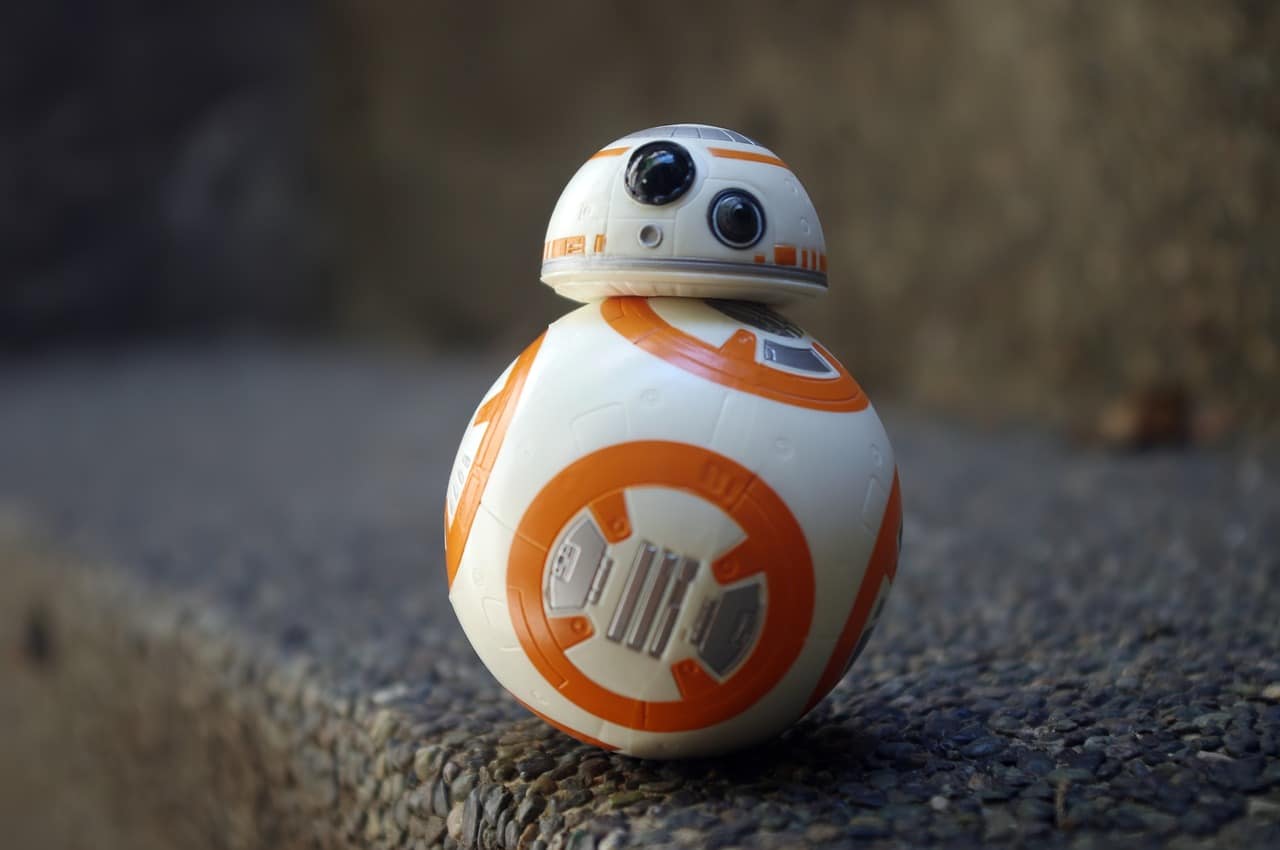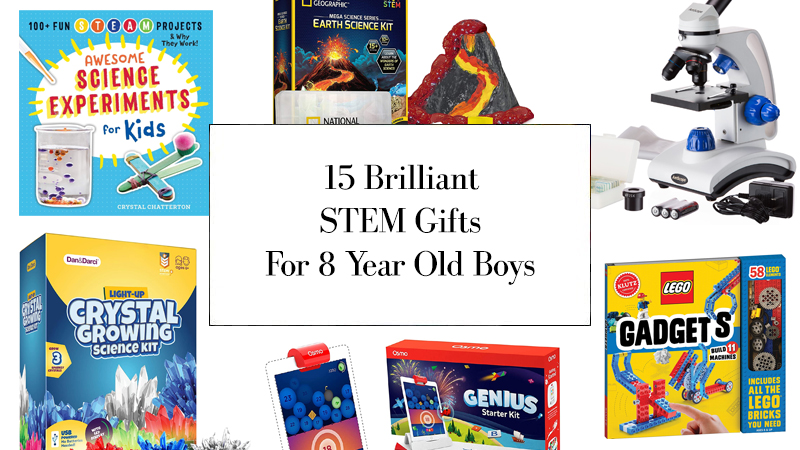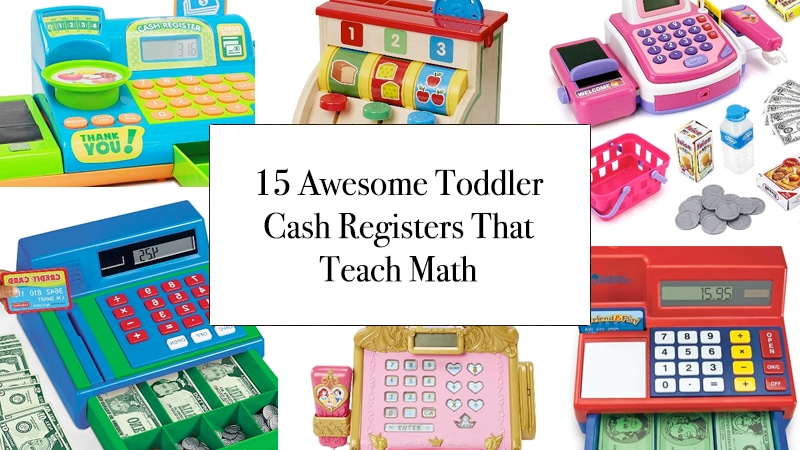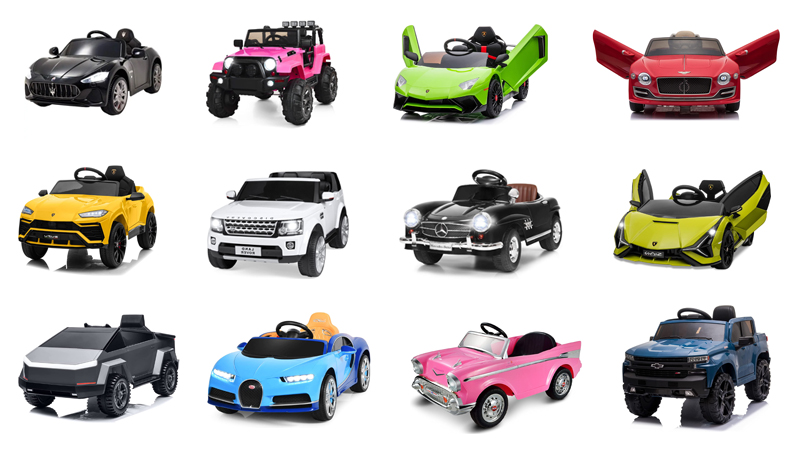In the age of iPads and smartphones, it can be a difficult task making sure that your kid is being properly engaged. Video games, while a lot of fun, don’t always provide the kind of intellectual stimuli that the growing brain requires.
The best science kits for kids are not only educational, but can be just as enthralling as the best video games out there. They also can provide the inspiration and foundation for a lifetime love of science, which can lead to more than just a hobby.

In fact, according to the Pew Research Center, STEM-related jobs have grown by a staggering 79% since 1990. That means that setting your child up for success with STEM skills is something that they may thank you for down the line.
Snap Circuits Classic SC-300 Snap Circuits Classic SC-300 Electronics
There is perhaps no better way to introduce your kid to the world of electronics than with this kit from Snap Circuits. There are over 300 experiments available here, which means that there are probably countless hours of entertainment and education all in this small package. While an electronics kit might sound a bit advanced for the recommended age group (8 & up) it is actually tailor made to be safe and easy. All the components snap together, which means that no tools or soldering is needed. And, when your kid inevitably checks off every project on the list, upgrades and expansion kits are available to keep the fun going even longer.
Creativity for Kids Grow ‘n Glow Terrarium
The wonders of nature have perhaps never been closer than they are with the Grow n’ Glow Terrarium from Creativity for Kids. Here is a product that is aged from year 6 and up, though it is safe to say that it can provide both education and entertainment for amateur biologists of any age. Inside the package is everything needed for two full terrarium plant cycles. That means potting mix, chia and grass seeds, river stones, and even a mister to keep everything watered. The real strength of this product is that it’s both scientific and artistic … kids can both design their own ecosystem using the included decorative elements, then grow their own plants inside that ecosystem, learning all about the life cycle of plants in the process.
4M Crystal Growing Experiment
Crystal growing was always one of my favorite experiments growing up, and for good reason. Watching the real-time formation of crystalline structures in your own home is incredibly exciting for all ages. It keeps kids engaged with the process, as they wont be able to help checking in on their crystal’s progress as often as possible. There are seven different crystal growth experiments included in this remarkably well-priced kit. The young geologist-to-be in your family will appreciate learning about mineral structures, while most kids will simply enjoy watching these colorful crystals grow. One top feature that didn’t used to come with these kits is glass display cases for the crystals. Back in the way we had to use mason jars, but these are much cooler and feel more scientific.
Scientific Explorer My First Mind Blowing Science Kit
The MIND BLOWING SCIENCE KIT by Scientific Explorer might be one of the more exciting ways to introduce STEM concepts to your youngster. With this 20 piece collection you and your child will have access to 11 different activities, each one designed to stimulate the young brain in during its formative years. The most exciting part is no doubt the color changing volcano, which offers a new bright twist on a classic experiment. Then of course there are the jiggly crystals, which is something we haven’t seen in other kids. While it’s clear that this particular science kit is intended for a slightly younger crowd (5+) there are some smaller choking hazards included that make it not suitable for toddlers. Children over 10 might need something a bit more advanced to keep their attention.
NATIONAL GEOGRAPHIC Mega Gemstone Dig Kit
Growing your own crystals at home is one thing, but going on your very own crystal expedition is another one entirely. That’s because this Mega Gemstone Dig Kit gives kids creative access to 15 different real gemstones, whereas most crystal growing kits only have one or two. This is a more specialized kit that is perfect for the kid who is into rocks or geology, though there is no doubt that this kinds of excavating will likely be a thrill no matter what they happen to be interested in. A full color learning book is included. Kids can learn all about how different crystals are formed and mined, as well as how to identify these more common crystals in the wild. Each kit allows for the expedition of 15 gemstones, so if you have multiple youngsters you might want to invest in multiple kits.
Stomp Rocket Dueling Rockets
Okay, so we have to start by admitting that there is not technically a whole lot of science going on behind the DUELING ROCKETS kit by Stomp Rocket. Sure, there is a very simple lesson about air-powered propulsion, but it’s doubtful that your kids will see this one as a science experiment. Instead, they’re going to see it for what it actually is … hours of fun rocket-based activities. The box claims a full 200ft firing distance, but the motivated youngster will probably be able to beat that. What we have always loved about Stomp Rocket is that it is, as advertised, 100% kid-powered, which is another way of saying that it is actually going to provide some exercise along with all the entertainment.
Insect Lore Deluxe Butterfly Garden
A personal butterfly garden is not something the we ever had access to as children, so the thought of being able to watch live caterpillars transform into butterflies is an exciting one, even now. This kit actually comes with 10 live caterpillars. By putting these caterpillars into the included chrysalis stations, kids can watch as their small bugs transform magically into butterflies over the course of the next few weeks. While this is certainly one of the most exciting toys for kids interested in bugs & biology, there can be some complications in ordering an account of there being live caterpillars in the box. The manufacturer recommends only placing an order if the daytime temperatures in your area are between 55F and 85F, otherwise your little caterpillars might not survive the trip.
Scientific Explorer Crime Catchers Spy Science Kit
The folks at Scientific Explorer have done it again, this time with a brand new science-oriented SPY SCIENCE KIT. Your child’s inner-sleuth will come to life while they try to solve one of two exciting mysteries using real science techniques as a guide. While your own kid might be too young to be interested in a career in forensic science, this is the perfect way to give them access to the kind of scientific thinking that is used in that profession. And who knows? They might turn out to be the next great detective after all. The kit comes included with everything needed to perform the required forensic science. We just wish that there were more than two activities in the box, as most kids will be able to work through them pretty quick.
Playz KABOOM! Explosive Combustion Science Lab Kit
It’s no secret that most kids like to see things being blown up. This desire for destruction is no doubt why the common “baking soda volcano” experiments has been around for so long. That’s why we appreciate the KABOOM! Combustion Science Kit for being as forthcoming as it is. Plain and simple, this is a science kit for the action-oriented child, and it is not likely to disappoint. With about 25 different experiments included and a 36 page lab guide and activity book, this is a kit that is actually designed to keep your kid engaged for the long haul, not just for 20 to 30 minutes like a lot of the other science kits out there. And don’t be worried: even though the box features a picture of dynamite and several large explosions, the kit itself is perfectly safe for ages and older.
Operation Game
It’s pretty amazing to see that one of the oldest and most cherished board games of the last century is still performing well with younger generations. OPERATION, the classic game of playing doctor, gives kids a chance to test their hand / eye coordination by performing mock surgery on a cartoon named Wally. What could possibly be better than that? Operation is a great game to be played with others or by yourself, so it is a popular go-to for rainy days and birthday parties. Whether or not it will inspire a career in the medical industry is somewhat more ambiguous.
Ultimate DIY Slime Kit for Girls and Boys
It’s hard to say exactly what the real draw is for slime-based activities, but for some reason, kids of all kinds have loved everything slimy & slippery for generations. Now, you can give your kids the chance to make their very own slime with this neat little kit. They’ll be able to customize colors, sparkles, textures, and more, all inside of a complete mixing set. So what exactly do you do with slime? The answer is, whatever you want to. It might seem a bit strange to us grown ups, but your kid will have no trouble figuring it out. And when they make that inevitable mess, the kit even comes with it’s own laundry detergent for quick and easy clean-up.
Science Kit For Young Researchers
What you’re getting here is a pretty impressive two pack of science kits, all from the educational professionals over at Purple Cow. They’ve built a reputation for making fun and quirky STEM-related kits products for a few years now, and their newest series of Crazy Scientist’s Lab Kits promises to be their most engaging yet. The first kit uses optical illusions to teach about light related concepts like color, refraction, and distortion. The second kit uses water gel to teach about polymers and bonding. Everything you need to conduct the experiments is included, including legitimate scientist gear like test tubes and pipettes. If you like this two pack, then you’ll be glad to hear that there are about a dozen other kits in the series, so you can keep that little scientist of yours occupied for years to come.
Scientific Explorer Magic Science for Wizards Only Kit
No matter how hard you try, some kids are always going to be more interested in the magical / supernatural side of things (thanks, Harry Potter) but perhaps that is not such a bad thing. With the Magic Science kit from Scientific Explorer, simple scientific experiments are framed through the lens of magical wizard spells. This way, you can count on the fact that your child’s imagination will be just as stimulated as their intellect. It doesn’t stop with the magic, however. Each experiment is laid out in the unique Educational Kit that will teach about the science behind the magic, so to speak. Did we mention the fact that it comes with a make-your own wizard’s cap? What a good time to be a kid!
4M Solar System Planetarium
Phenomenal cosmic power is now at the fingertips of anyone over the age of 8. The 4M Solar System Planetarium features a fully customizable planetarium model with orbiting arms, wild paint colors, and physical features like rings and storms that can be added directly to the planets. Whether your kid is more interested in recreating our own solar system or creating one of their own, all the tools to do so are included in this surprisingly complete science kit. Teaching your kid about astronomy is the goal here, but the elegance and majesty of a mobile model solar system might also teach a little something about our place in the universe, which is a nugget of wisdom that many of us can only hope to attain.
Learning Resources Primary Science Lab Activity Set
Thus far on our list, we have looked at science kits that are geared for the 8 and over range. While this is surely the best age to encourage scientific studies in children, it is by no means the earliest time you can do so. The Primary Science Lab by Learning Resources is geared towards a younger audience (ages 4+) with simpler tools, safer experiments, and exciting bright colors that are sure to keep the attention of any child. Experiments are written out plainly on big green cards, so that with the help of an adult, any aged kid can participate in the thrill of the scientific method. This kit contains only one pair of goggles and one magnifying glass, so if you have multiple youngsters you might want to consider getting a second set. At the low price, that probably won’t be too big of a deal.
4M Kitchen Science Kit
All of the classic do-it-at-home experiments are collected neatly and nicely within the KidzLabs Kitchen Science kit by 4M. Whether it’s a bubbling volcano with lava or lemon-fueled electricity, this compendium of easy science is one of the most complete and easy-to-work-with kits that we have had the pleasure of reviewing. The sugar rock candy is sure to be a hit among kids and adults alike, and the fingerprinting kit offers something a little more unique that you don’t normally find in kits at this price range.
Be Amazing! Toys Big Bag of Science Works
If we have any criticism of the multitude of science kits on our list, it is simply that their isn’t enough science to keep the interested kiddo engaged for very long. Often, they can burn through them in an afternoon or two. The Be Amazing! Big Bag of Science Works offers one of the more comprehensive collections of science experiments geared towards a slightly younger crowd (5+). The real highlight here is a step-by-step instruction book that helps frame the experiments in their respected categories of Earth Science, Physical Science, and Life Science. This is the perfect introduction to concepts that they will no doubt make good use of for the rest of their lives. An easy-carry bag sets this one apart from the competition. It’s very easy to take from place to place.
AmScope 120X-1200X 52-Piece Kids Beginner Microscope
So what happens when your little scientist burns through all the activities in their experiment kit? What can you offer a child whose curiosity only seems to increase with each day? The AmScope Beginner Telescope is a great way to further your child’s scientific passions, without being overly complicated or hard to use. A 52-piece accessory kit provides everything that is needed for high-detail microscopic viewing, including a few labeled samples to get you started. However, with the extra blank slides included, your child will quickly be able to observe nearly anything at incredible magnification.
Awesome Science Experiments for Kids: 100+ Fun STEM / STEAM Projects and Why They Work
What we have here is not so much a science kit as it is a collection of suggested fun experiments bound within the pages of a full color book. This is the perfect addition to any kid’s science kit in that it allows them to take some concepts even further, not to mention participate in a few lesser-known at-home science experiments. In fact, there are over 100 science experiments for kids in this book, a staggering amount that is sure to keep the young ones busy in the lab for a long time. The book was written by chemist and former science teacher Crystal Chatterton, whose creative descriptions and bright, engaging visuals make this book a delight for STEM-heads of all ages (though ages 5 to 10 will enjoy it the most.
Klutz Lego Chain Reactions Science & Building Kit
When it comes to engaging kids activities, LEGO clearly knows what they’re doing. They’ve been coming up with fun and innovative play-sets for decades, and it doesn’t look like they’re slowing down anytime soon. Now the toy giant is teaming up with Klutz to release a special kit that blends the magic of Legos with the science of movement and action. Kids will be able to use their Legos in entirely new ways to make complicated Rube-Goldberg style inventions. As is usual with LEGO, imagination is the only limit!
The VERDICT: Best Science Kit for Kids in 2023
It’s actually a lot easier to get a kid interested in science than an adult. As we grow up, our minds become more and more set in their ways, to the point where learning new things becomes something of a snore.
Kids, however, have beautiful little minds that act like sponges to the realities and mysteries of the world around them. The best science kits for kids are the ones that take advantage of this mental openness to instill not only a passion for science, but a dedication to scientific thinking and principles.
In terms of overall STEM value, we absolutely love the Big Bag of Science Works by BeAmazing! Toys. It has a lot of components to keep the kids busy and is super portable and easy to work with.
However, if your child is becoming more interested in science and you think that you’d like to encourage them further, the AmScope Beginner Microscope is a great way to help them along their scientific journey.
Buying Guide: How to Choose a Science Kit for your Kids
The 20 science kits for kids that we have reviewed here constitute only a small fraction of what is available on the market. In fact, the business of kids science toys is actually experiencing a big boom, which is a good thing for any parent concerned for their child’s intellectual development.
The hard part is finding the right kit for your own child. We’re taking a closer look at what exactly it takes to make a great science kit, and the things you should consider before you make your purchase.
Recommended Age Rating
With science experiment-based kits, it is very important to double check the recommended age for each product before you buy. The reasons for this are twofold.
Firstly, some young children should not be exposed to the small parts and chemicals that are often included. Because many things are hazardous to younger children, it becomes very important to keep certain things away from them.
Secondly, you don’t want to go too far the other way, either. A child who is not challenged by their science experiments will likely not be engaged with them, the the chances that they abandon science altogether goes up.
Ages 3 to 6
Kids at this are more likely to be engaged by activities that grab their immediate and physical attention. They like to smell, hear, taste, and touch, so getting them a kit to go along with that is a good idea. Baking soda volcanoes and slime kits are both easy to enjoy and safe for even youngsters, and with adult supervision, some basic crystal experiments as well.
Ages 7 to 10
At this age, you’re going to want to find a science kit that helps prepare your child for the science classes that they will most certainly be taking in middle school, high school, and beyond. Generally this means looking for experiment kits that teach things like the scientific method, or that have included educational workbooks that help explain the concepts behind the experiments themselves.
Ages 11 and up
When your kid reaches this age they might need some slightly more advanced projects in order to keep them engaged with the material. Things like electronic kits are a good option because they require increased hand coordination and dexterity, two things that are in development in the brain during these years.
Other Materials You’ll Need
You should be advised that many of the science kits listed on our review do not come with 100% of the things needed to complete the experiments. For instance, many kits require common household items like baking soda, distilled water, cups & plates, or even lemons & potatoes to get the experiment done properly.
You don’t want to wait until play day to find out that you’re missing something important, so be sure to check the product specifications, and if available, the experiment handbook to see what it is that you’ll be needing.
The Different Types of Science Kit
As you have probably picked up on by now, there are more than a few different areas of specialty that are available with science kits. Whether you’re looking for an all-around science kit that has a bit of everything, or you need that perfect kit for the kid that knows exactly what they want, it helps to know a bit about what kind of experiments are available.
Geology
For the rock & mineral oriented youngster, there are a few different popular experiments that you can choose from. The most popular include crystal kits in which simple salts are blended with solutions to create a self-growing crystal formation. These are great for kids of all ages. And rock candy, of course, is delicious.
Astronomy
Our favorite astronomy science kit of the year is the Solar System Planetarium from 4M. It lets the kids build and decorate a scale model of the solar system, or, if they prefer, create an entirely new solar system of their own.
In addition, there are a lot of stargazing kits out there that teach about constellations, navigation, and more.
Biology
Children are natural born biologists. They have a built-in curiosity for all things slimy, creepy-crawly, and wild. A biology based science kit is a great way to stimulate and encourage your child’s natural wonder for the world around them.
Butterfly kits, jar gardens, and simple aquariums are a great place to start, though be mindful if you are ordering any live insects through the postal system … they often times do not survive extreme temperatures.
Chemistry
You’ll be hard pressed to find a young boy or girl who isn’t interested in seeing explosions, and that (to a safe extent) is what you get through the magic of chemistry. Everything from foaming volcanoes to fizzy rocket launchers are available to teach about simple chemical principles and reactions.
For the slightly more advanced youngster, a beginner’s microscope is a heck of a gift indeed.
Frequently Asked Questions (FAQ)
Q: What is a good age to introduce children to science?
A: It is never too young to start teaching your child about science! While there are certain experiments and toys that are not appropriate for very young children or infants, there are products designed especially for this age range that do not feature swallowing hazards or anything like that.
Q: What’s a good science kit that both boys and girls will like?
A: It used to be common thought that what would be popular with boys would not be popular with girls, and vice versa. However, this mode of thinking has become outdated, and it is likely the reason that girls have been less interested in pursuing STEM-related careers for so long.
In fact, in most studies on the subject, girls performed as well or better than their male counterparts in math & science, despite the discrepancy.
Q: Can kids use these science kits without adult supervision?
A: While some of these experiments and kits are much simpler than others, it is always best practice to review the experiments and materials yourself before allowing your child to perform them unobserved.
Generally speaking, these kits are made to be as safe as possible and rarely have any toxic or dangerous chemicals. Still, kids can be kids, and they can make a mess of just about anything if you’re not paying attention.

